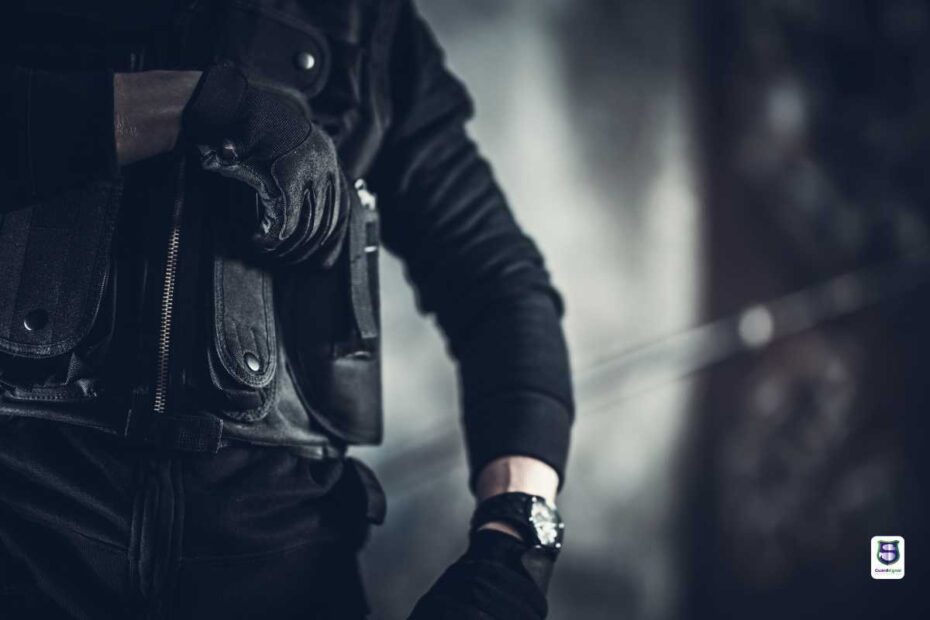Ensuring security guards have the proper safety equipment is crucial for their protection and ability to perform their duties effectively. The job of a security guard can involve encountering dangerous situations or unruly individuals, so having the right gear is essential. Safety equipment acts as a safeguard, giving security guards a line of defense as well as a means to apprehend suspects or deter threats when necessary.
The exact safety equipment needs may vary depending on the site or environment being secured. For example, a museum security guard would likely require lighter gear than a guard working the door at a nightclub. But certain basics apply across the board. Having the proper safety equipment not only protects the guards but also gives them a sense of confidence and authority in the role. It enables them to act decisively when issues arise.
The right safety equipment empowers security guards to carry out their duties with the knowledge that they are equipped to handle uncertainties. It is an integral part of the job. This checklist covers the key safety equipment items that all security guards should have access to for their protection.
Body Armor & Vests
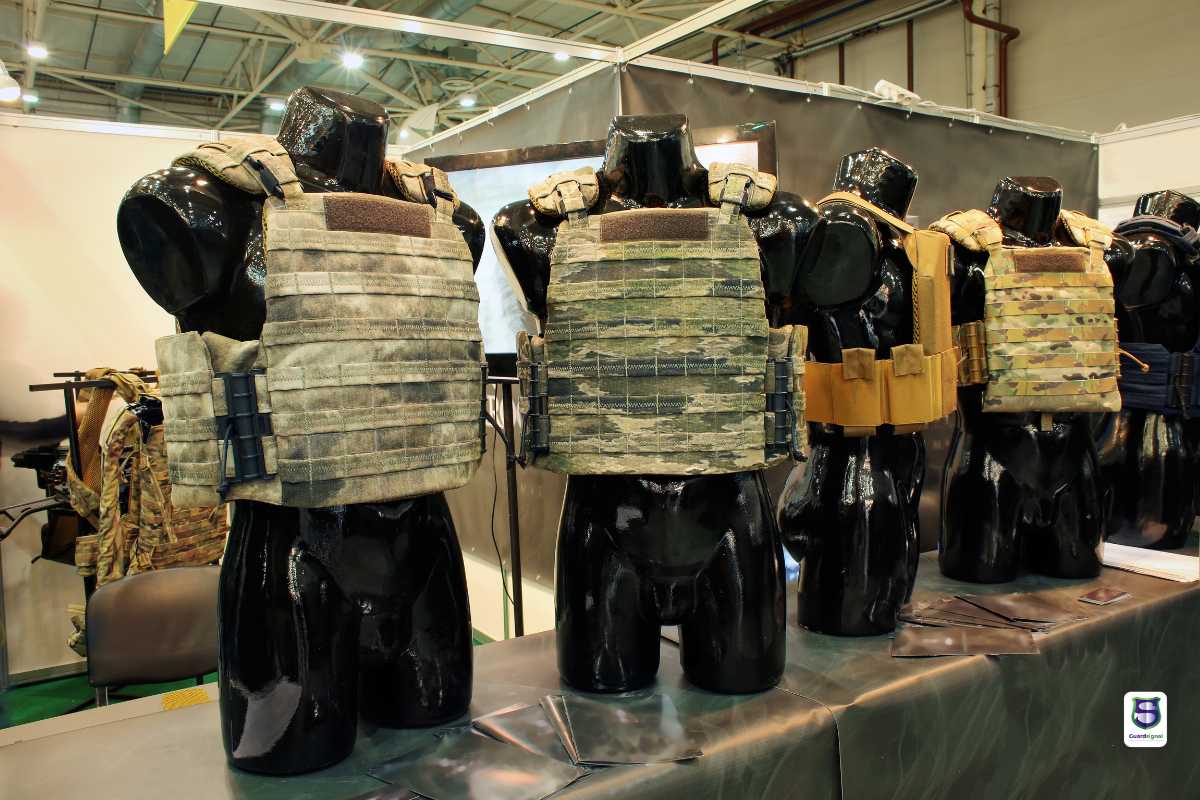
Body armor and vests are essential pieces of protective gear for security guards. The right vest can help protect against blunt force trauma and bullets. There are a few key factors to consider when selecting body armor:
Types of Vests
- Concealable vests: These vests are designed to be worn under a uniform shirt. They are made of lightweight, flexible materials like kevlar or polyethylene and protect handguns.
- Tactical vests: Tactical vests provide an external layer of protection and have MOLLE webbing to attach additional gear. They offer rifle protection.
- Stab-resistant vests: These vests protect against knives and spikes. They may incorporate chainmail or steel plates.
Materials
Kevlar and polyethylene are common lightweight, bullet-resistant materials used in soft concealable vests. Steel or ceramic plates can be added for extra protection. Stab vests incorporate materials like woven steel or Kevlar with chainmail.
Protection Levels
The National Institute of Justice sets standards for body armor levels. Protection ranges from Level IIA (lower velocity handguns) up to Level IV (armor-piercing rifle rounds). It’s important to select the appropriate protection level for the expected risks on the job.
Duty Belt
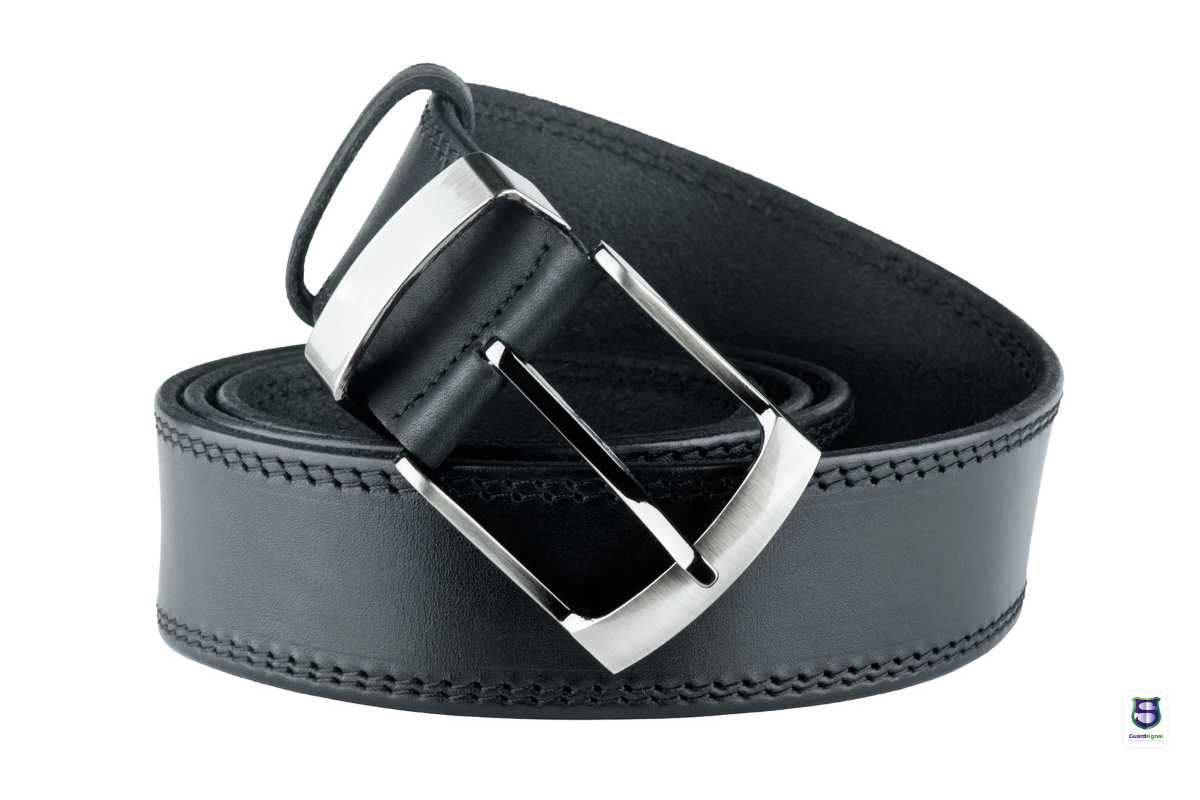
A duty belt is an essential piece of equipment for security guards. It allows you to carry and access critical gear needed for your duties. When choosing and wearing a duty belt, keep these factors in mind:
- Equipment carried – Typical items worn on a duty belt include a radio, baton, handcuffs, pepper spray, flashlight, and gloves. The belt should have keepers or holders designed for each piece of equipment. This allows for easy access when needed.
- Proper wearing and fit – The duty belt should ride high on your waist. It should be snug but not uncomfortably tight. You want a secure fit so the belt and gear don’t sag or shift around. The belt should be sized specifically for you. It may take some adjustment to find the right tightness. Wearing it slightly higher than a regular belt is ideal for carrying the weight of security equipment.
- Material – Nylon and leather are common duty belt materials. Leather looks more professional but requires more maintenance. Nylon is lighter but still durable. Choose a sturdy material that will hold up to daily use.
- Comfort – Look for a contoured or padded interior lining. This helps reduce pressure points from equipment and makes the belt more comfortable for extended wear.
Take the time to find a properly fitted duty belt designed for your needs. It will make carrying and accessing your essential security gear much easier. An uncomfortable or ill-fitting belt can hamper your duties.
Boots
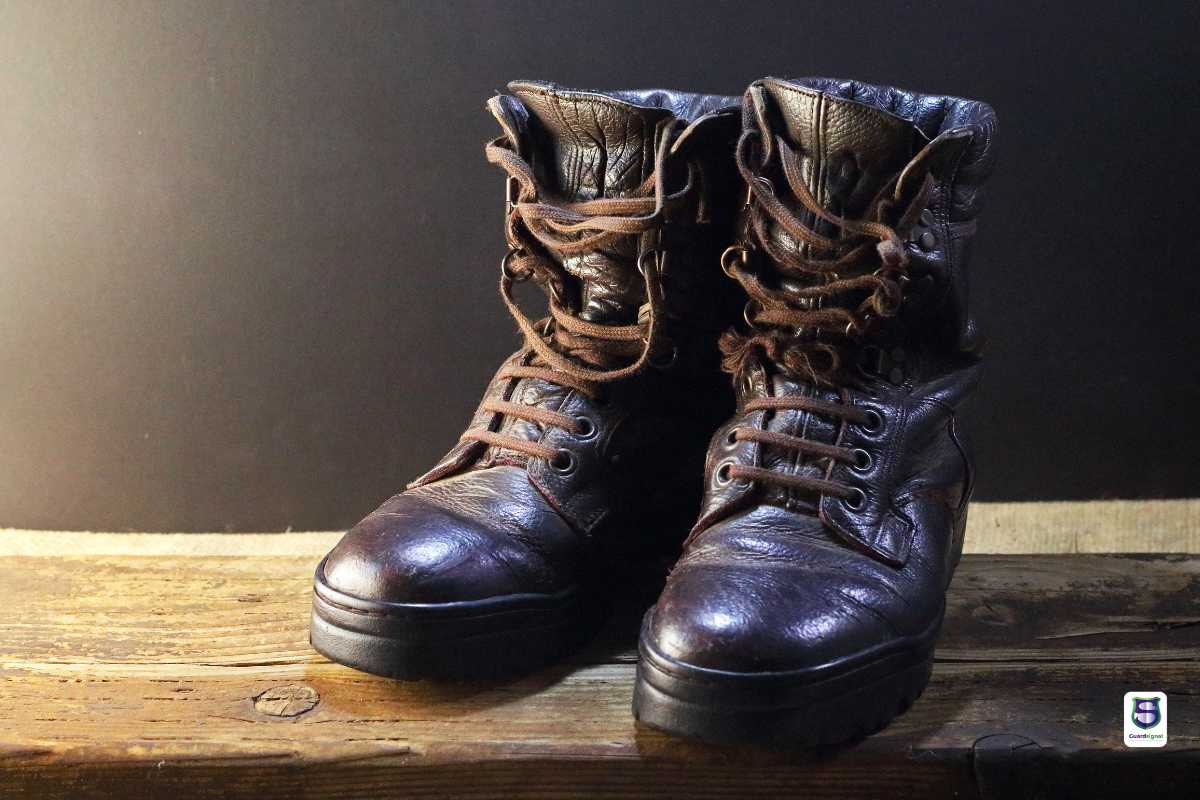
A security guard’s boots are one of the most important pieces of equipment, as you’ll likely be on your feet for long periods. Choose boots made of durable leather or fabric, with safety features like steel toes and slip-resistant soles. Make sure boots fit properly, are broken in, and provide ankle support and cushioning. Avoid boots that are too tight or loose. Properly fitted boots reduce fatigue and help prevent injuries.
Consider composite toe boots rather than steel toes if working in environments that require going through metal detectors frequently. Some key factors when selecting boots:
- Materials: Leather or durable fabrics like nylon are ideal. Leather is sturdier while fabric boots tend to be more lightweight.
- Safety Features: Look for steel or composite toe for protection from falling objects. Slip-resistant soles provide traction. Some have puncture-resistant soles.
- Fit: Try boots on with the socks you’ll wear on duty. There should be about a thumb’s width between your longest toe and the boot tip. The heel and instep shouldn’t slip; laces or zippers should close snugly.
Proper boots keep your feet comfortable and protected during long shifts on your feet. Don’t cut corners here – high-quality boots are worth the investment for this demanding job.
Flashlight
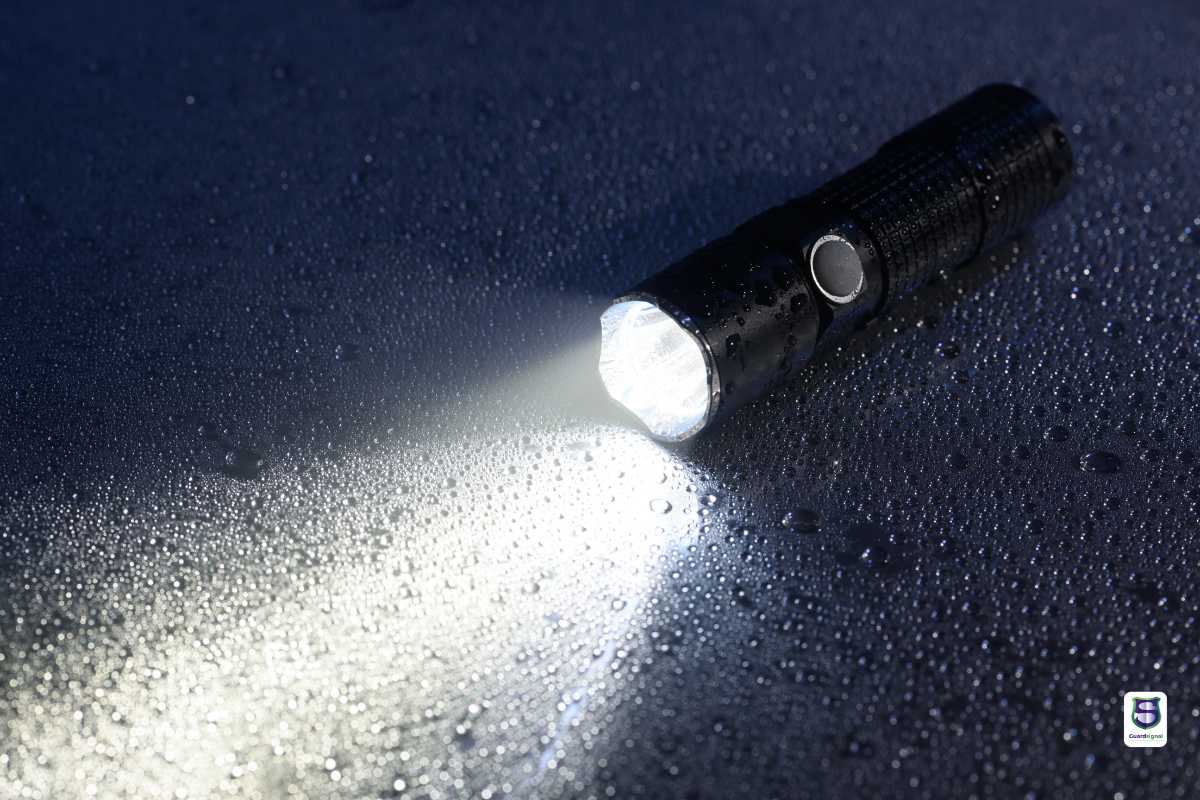
A flashlight is an essential piece of equipment for security guards who often work night shifts or patrol dark areas. When selecting a flashlight, there are a few key factors to consider:
- Materials – Flashlights can be made of aluminum or polymer materials. Aluminum flashlights are more durable but heavier, while polymer ones are lighter but more prone to breaking if dropped.
- Lumen Output – The lumen output determines the brightness. Most security guard flashlights should have at least 200 lumens, but 500+ is better for seeing farther distances. Brighter isn’t always better though, as too many lumens can cause glare and ruin natural night vision.
- Power Source – Rechargeable flashlights offer convenience but battery-powered ones ensure you always have a backup. Rechargeable lithium-ion batteries hold their charge well over time. Alkaline batteries drain faster but are inexpensive and easy to find.
Choosing a sturdy, bright flashlight allows security guards to illuminate dark areas and identify people or hazards from a distance. But it’s also important to consider weight, size, and battery life based on your specific needs. With the right flashlight, security personnel can stay safe and vigilant during low-light conditions.
Handcuffs
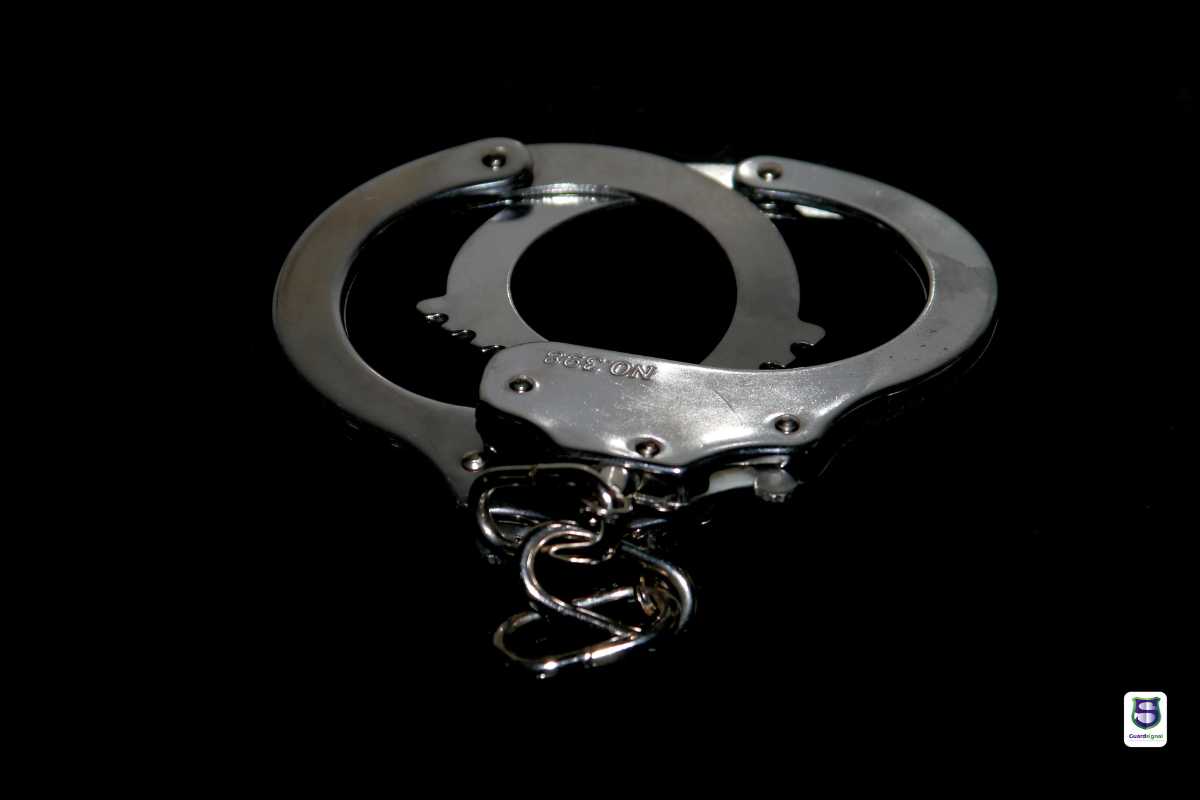
Handcuffs are an essential piece of equipment for security guards. The two main materials used for handcuffs are steel and aluminum.
Steel handcuffs are the most common and provide maximum security and durability. They are resistant to tampering and escape attempts. Steel handcuffs do have some drawbacks, including added weight and the potential to cause skin abrasions.
Aluminum handcuffs are lighter weight while still maintaining adequate strength. This makes them more comfortable to wear for extended periods. However, aluminum is easier to cut through, so these cuffs may not be suitable for high-risk situations.
An important feature to look for in handcuffs is the double lock mechanism. This allows the cuffs to lock in place after tightening so they cannot loosen or tighten further. Double locking protects against injuries or escapes.
Handcuffs should be carried in a secure case on the duty belt. Look for a sturdy case with retention features to prevent the cuffs from falling out. Carrying handcuffs properly protects them from damage and allows for quick access when needed.
Having the right handcuffs and carrying case ensures security guards are prepared to safely and effectively restrain suspects if the need arises. Investing in quality steel or aluminum cuffs with a double lock provides reliable performance.
Baton
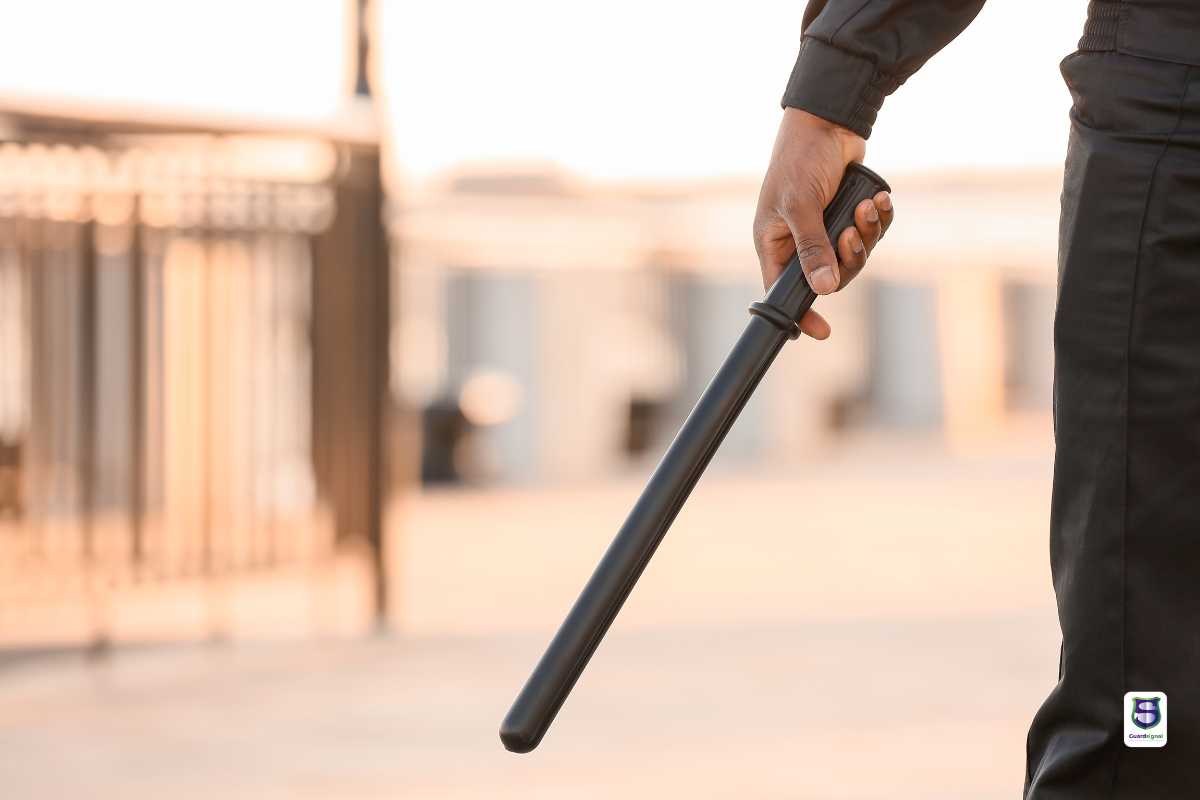
A baton is an important piece of non-lethal equipment for security guards. When selecting a baton, guards should consider the materials, expandability, and training required.
Materials
Batons come in various materials like wood, aluminum, and steel. Wood batons are inexpensive but can crack or break over time. Aluminum batons are lightweight but may bend or dent. Steel batons are the strongest but also the heaviest.
Expandable vs Fixed Length
Expandable batons can collapse down to a compact size for carrying, and then expand to full length when needed. This makes them more portable but they can jam or fail to fully extend when swung. Fixed batons maintain their rigid full length at all times.
Proper Training
It takes training to properly and legally use a baton. Guards must learn techniques for drawing, gripping, swinging, and targeting with minimal risk of harm. Without sufficient training, a baton could be ineffective or taken and used against the guard. Proper baton training is essential for the safety of both the guard and the public.
Pepper Spray
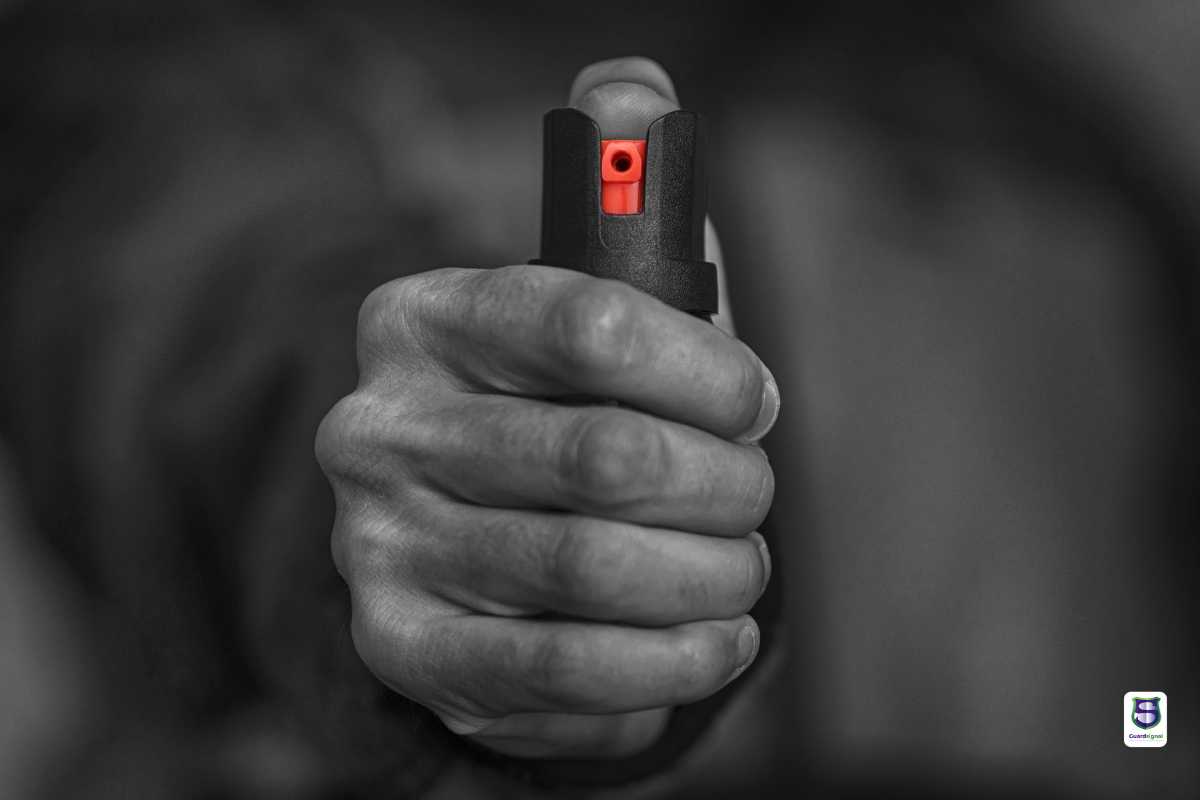
Pepper spray is an important non-lethal tool for security guards to carry while on duty. When purchasing and using pepper spray, there are some key factors to consider:
Active Ingredients and Strength
- Pepper spray contains oleoresin capsicum (OC), which is derived from hot peppers. The OC percentage determines the strength, with a higher percentage indicating a stronger spray. For security guards, a 10% solution is recommended for effectiveness while minimizing unnecessary injury.
- Major pepper spray types include stream, cone, foam, gel, and fogger sprays. Cone sprays offer a good balance of range and area coverage.
Range
- The effective range of pepper spray depends on the delivery method. Cone sprays can reach around 10 feet, while stream sprays can reach up to 20 feet. Consider your needs and situations when selecting a range.
- Wind and weather conditions can impact the range. Stay aware of your surroundings when deploying pepper spray.
Proper Use and Training
- Read instructions thoroughly and train with inert practice sprays first. Proper use is crucial for effectiveness and safety.
- Aim the spray at the assailant’s face and eyes from 5-10 feet away. Use a quick burst of 1-2 seconds.
- Have a plan to subdue the assailant after spraying. Effects last 15-30 minutes usually.
- Know proper decontamination steps. Flush eyes and skin with water. Seek medical help if needed.
- Check laws regarding carry and use. Use judiciously for self-defense only.
With the right pepper spray and training, security guards can use this tool to effectively stop threats while minimizing lasting injuries. Consider strength, range, legalities, and practice when incorporating pepper spray into your duty belt equipment.
Gloves

Gloves are an essential piece of protective gear for security guards. The right gloves allow guards to carry out their duties safely and effectively. When selecting gloves, there are a few key factors to consider:
Materials
The material the gloves are made from determines their durability and flexibility. Common materials include:
- Leather – Offers good puncture resistance. Breathable and flexible. Not 100% liquid-proof.
- Fabric – Lightweight and breathable. Not as durable as leather. Easy dexterity.
- Rubber – Waterproof and chemical resistant. Bulky and reduced dexterity.
Leather is often the preferred material for security as it balances protection, breathability, and dexterity.
Protection Levels
Gloves come in different grades of cut resistance. Higher grades provide more protection but reduce dexterity. Guards need to assess the level of risk to determine the right protection grade. Jobs involving searching, restraints, or potentially sharp objects require a higher protection level.
Dexterity
The ideal gloves allow complete freedom of movement. Thinner and tighter-fitting gloves maximize dexterity. Areas like fingertips may be left uncovered for precision handling. Dexterity is especially important for tasks like operating radios, phones, computers, or writing reports.
Choosing the right gloves involves balancing protection and dexterity for the specific security role. Prioritize hand safety, but ensure guards can still manipulate objects and use equipment efficiently.
Conclusion
Having the proper gear is crucial for security guards to stay safe while on duty. The equipment listed in this article, such as body armor, duty belt, boots, flashlight, handcuffs, baton, pepper spray, and gloves provide important protective and functional value.
Body armor and vests protect the torso from blunt force trauma and bullets. A sturdy duty belt holds equipment securely in place. Proper footwear like boots allows for long hours on your feet and agile movement. A bright flashlight illuminates dark areas and can even serve as a non-lethal weapon. Handcuffs safely restrain suspects. Batons and pepper spray enable self-defense and apprehending criminals. Gloves guard hands from injury during altercations.
While this covers the essentials, some additional recommendations for security guards are maintaining physical fitness and proper training for using defensive tools and restraint techniques. Having the right mindset of alertness, courage, and quick thinking is also vital. Remember that your safety should be the top priority. Follow security protocols and listen to your instincts in dangerous situations. With the proper equipment and training, security guards can effectively protect themselves, others, and property from harm.
- 09 Steps Guide to Writing Security Incident Reports - October 24, 2024
- What A Security Guard Might Check From You - October 24, 2024
- What Can Security Guards Legally Do And Can’t Do - October 24, 2024
